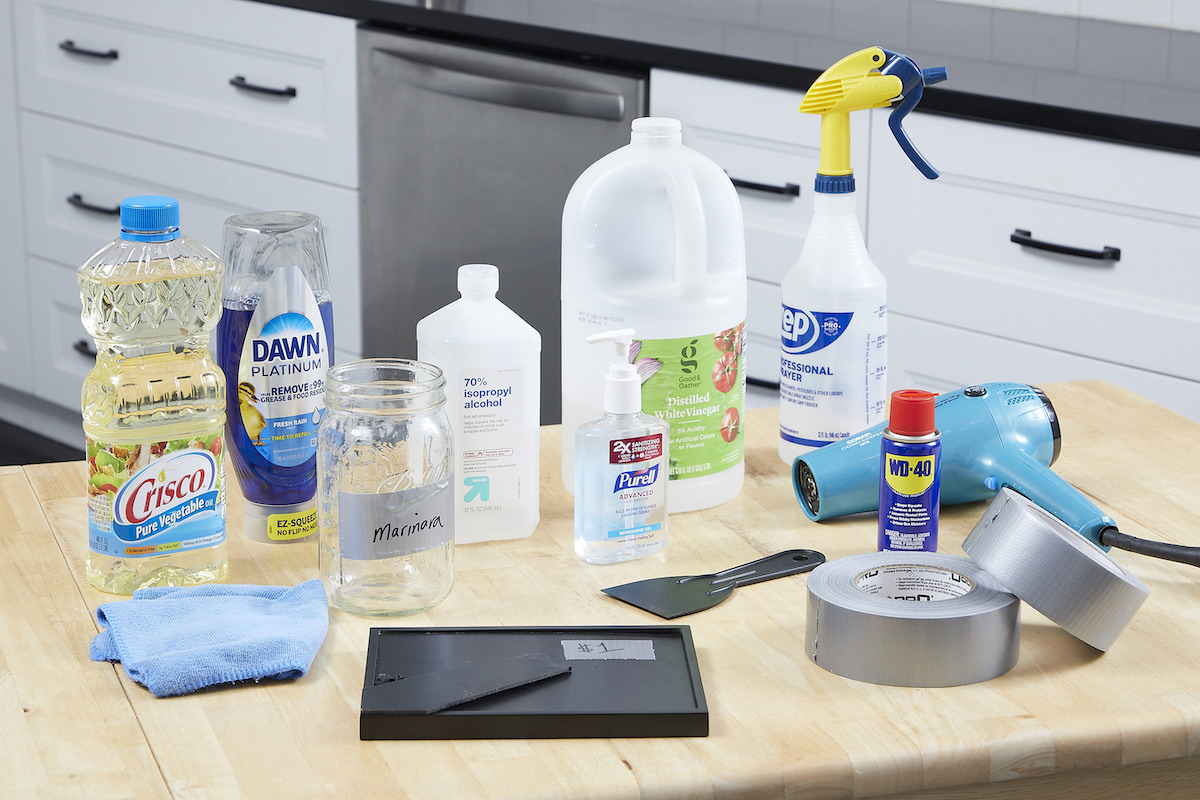

We may earn revenue from the products available on this page and participate in affiliate programs. Learn More ›
A roll of duct tape can be found in almost every toolbox in the world, thanks to its versatility, accessibility, and the fact that it quite literally sticks like glue. That’s because duct tape is formulated with natural rubber compounds to provide reliable, long-term adhesion. But that blessing is also a curse when the time comes to remove the tape and all traces of it. Cleanup is no easy task.
6 Ways to Remove Duct Tape Residue
The six fixes here are effective for removing duct tape residue from wood, glass, vinyl, and other materials without damaging the surface itself.
1. Scrape the tape residue off.
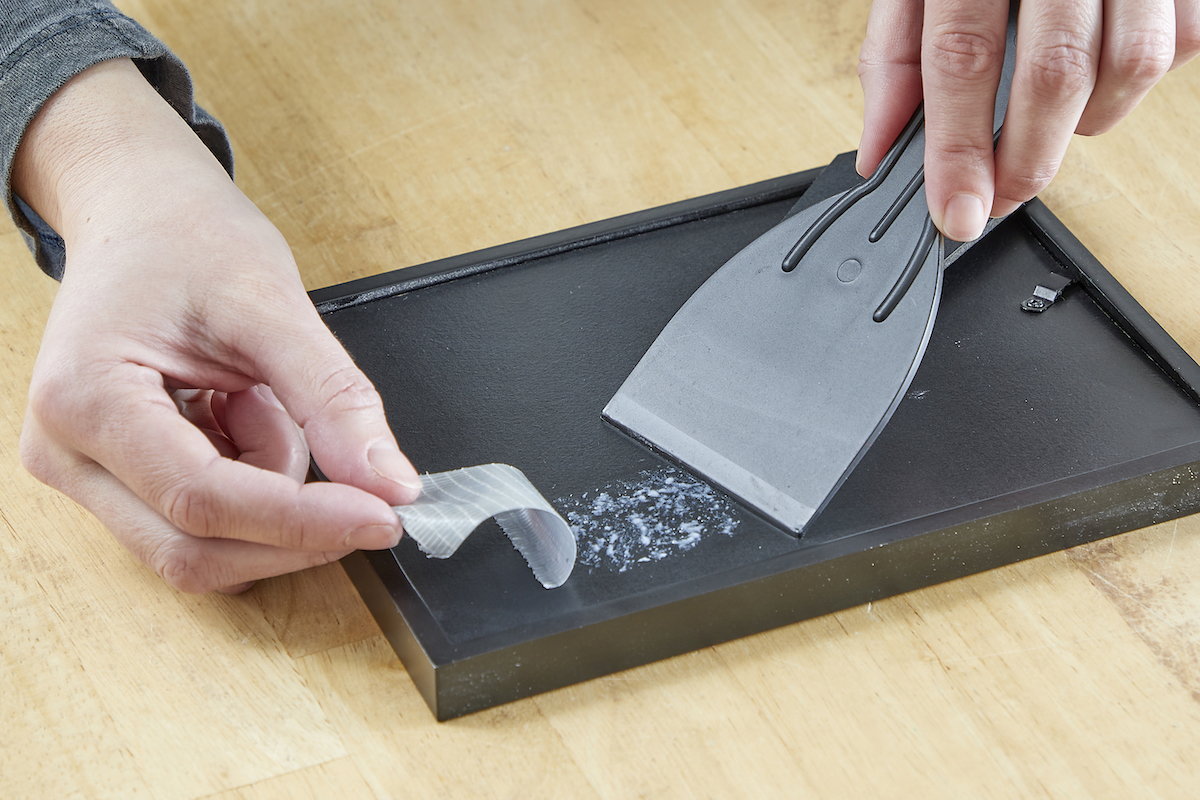
In cases where duct tape residue is minimal and not too stubborn, a simple scraping session with a putty knife (or a butter knife, in a pinch) can banish the gunk. Start from one end of the affected area, moving slowly to the other with small, repetitive scrapes, holding the blade nearly parallel to the surface so as not to gouge. Be especially patient and careful when working with wood and vinyl, which are easily damaged. A credit card can also work well if you don’t have a putty knife.
2. Loosen the tape with warm water.
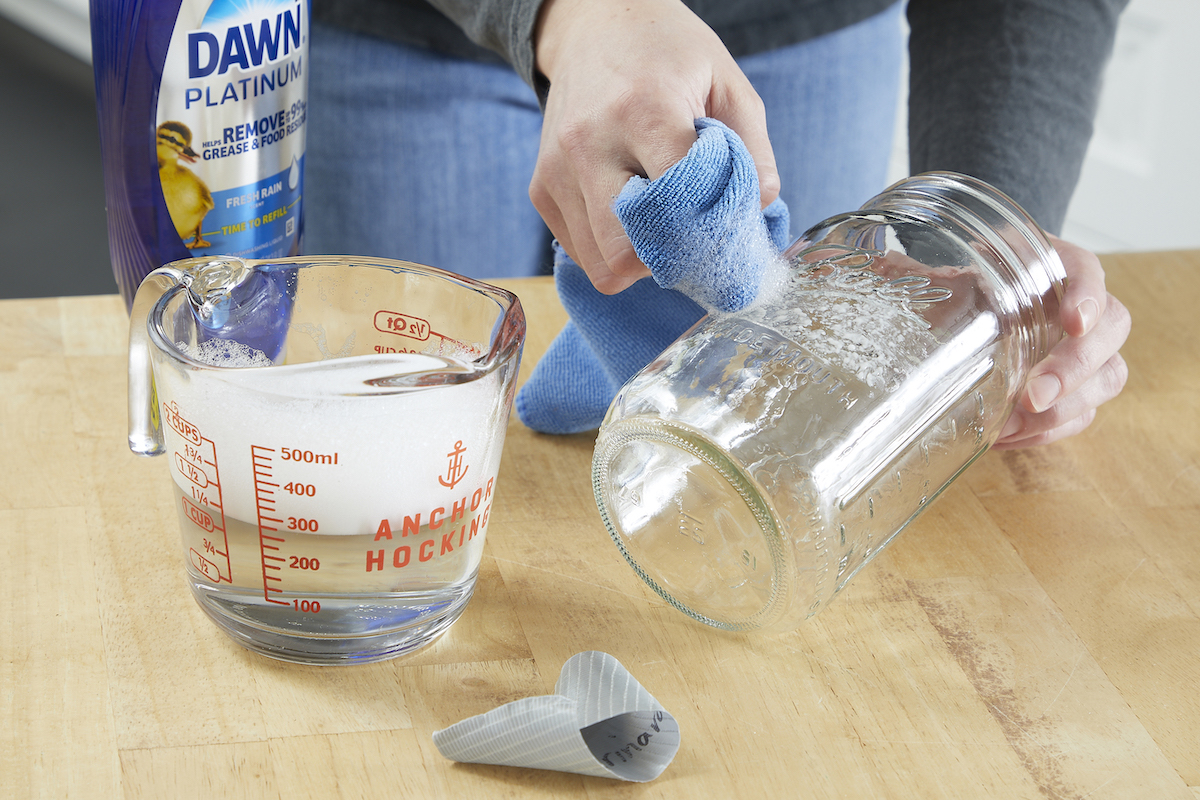
Warm water can often effectively remove duct tape residue from glass, vinyl, linoleum, and other surfaces that have a high-gloss finish. The heat softens the structure of the glue, while the viscosity helps push it away. Apply plain water with a sponge or microfiber cloth, scrubbing with quick, back-and-forth strokes.
If that fails, add a drop or two of hand soap or dishwashing liquid to further break down the bond. For particularly stubborn goo, and only on water-resistant surfaces, soak the item in warm soapy water, or cover it with a warm, wet, soapy sponge or rag, for 10 to 20 minutes. Then wipe dry, banishing the gunk as you go.
3. Use vinegar.
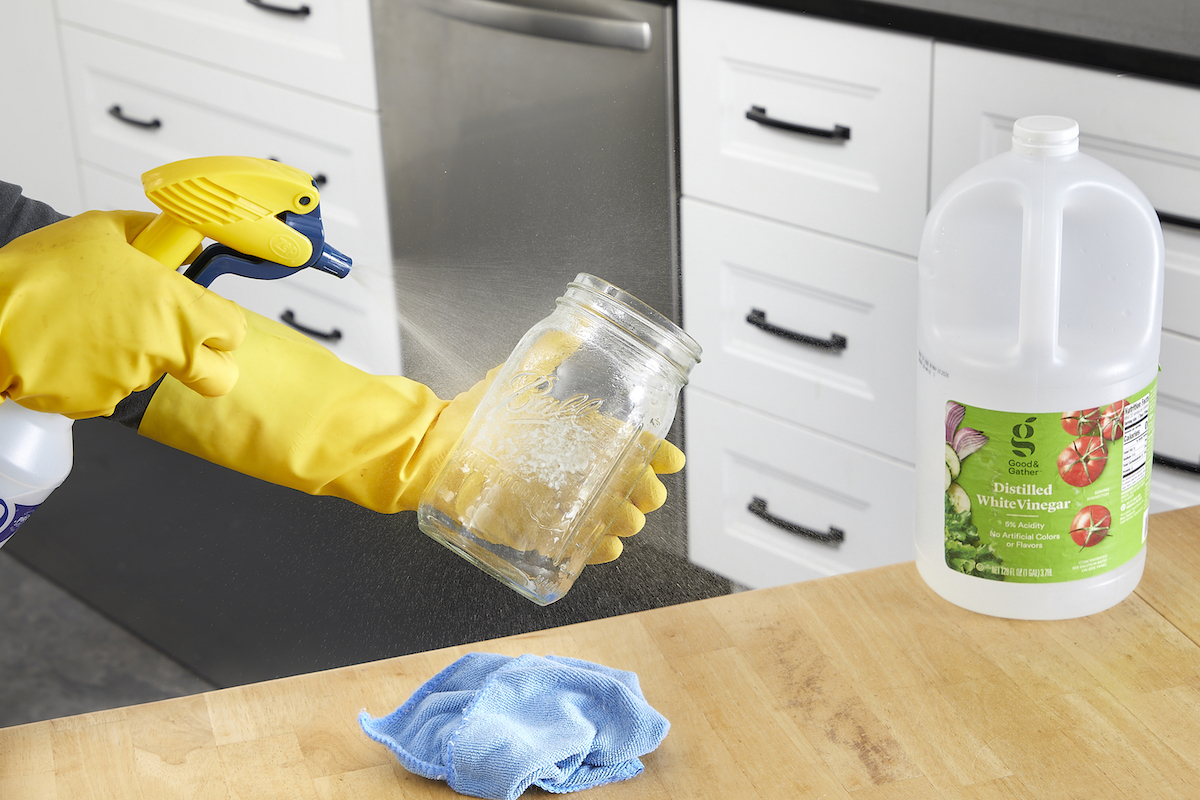
A vinegar-and-water mixture is an easy way to remove tape adhesive. Mix equal parts white vinegar and water in a spray bottle, then spray directly onto the sticky residue. Let this sit for 5 to 10 minutes to loosen the adhesive. Then, wipe it away with a clean cloth, or gently scrape with a plastic scraper.
Keep in mind, though, that this method may not be ideal for surfaces like unfinished wood, natural stone, or delicate materials. This is because vinegar is acidic and can cause damage. You should always test the solution on a small area that’s out of the way to make sure it doesn’t harm the surface.
4. Dissolve it with rubbing alcohol.
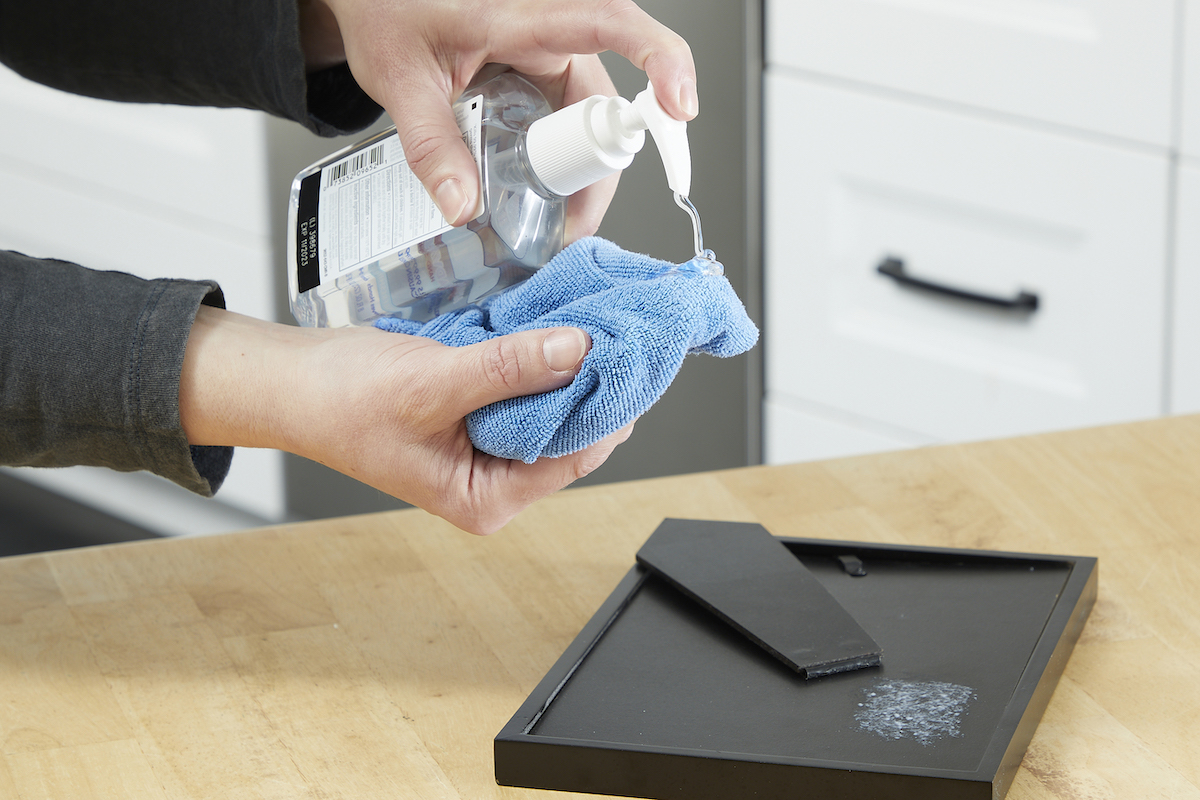
Rubbing alcohol can dissolve duct tape adhesive from a nonporous surface. This solvent is unsuitable for most painted materials, and should always be patch tested first, even on metal and glass.
Dab a rag soaked in isopropyl alcohol (the kind you probably have in your medicine cabinet) and test a small, inconspicuous area of residue first. If the test patch proves successful, proceed by covering the gunk with alcohol, working in small sections, and letting the liquid evaporate to the point where you can easily wipe away whatever matter is left behind.
If you don’t have any rubbing alcohol at hand, you can always use hand sanitizer; it has a high alcohol content and can also break down tape adhesive.

Duct Tape Residue Removal Tips
Whichever removal method you choose, follow these rules of thumb for getting tape residue off:
- Test a small area first: Before using any of our methods, test it on a small, inconspicuous spot to make sure you don’t damage the surface.
- Apply enough pressure: Whether you’re wiping or scraping, use firm but controlled pressure to effectively remove the residue without harming the material underneath.
Try a commercial adhesive remover: If home remedies aren’t cutting it, try a commercial adhesive remover (like Goo Gone, for example). Follow the product’s instructions carefully and make sure it’s safe for the surface you’re working on.
5. Lubricate it with WD-40 or cooking oil.

Oil and other water-displacing lubricants can help with tape residue removal. If you’re removing tape from glass, linoleum, vinyl, or finished wood, reach for WD-40. (If you haven’t got a can handy, substitute room-temperature vegetable oil straight from your kitchen cabinet.)
Wear gloves to protect your skin and spray the surface entirely, then wait a few seconds before using your gloved finger to smooth away duct tape residue. Then wash away the remaining oil with soap and water. Never use oil or other lubricants on unfinished wood; it will sink into the pores for good—and that’s bad!
6. Heat it up.
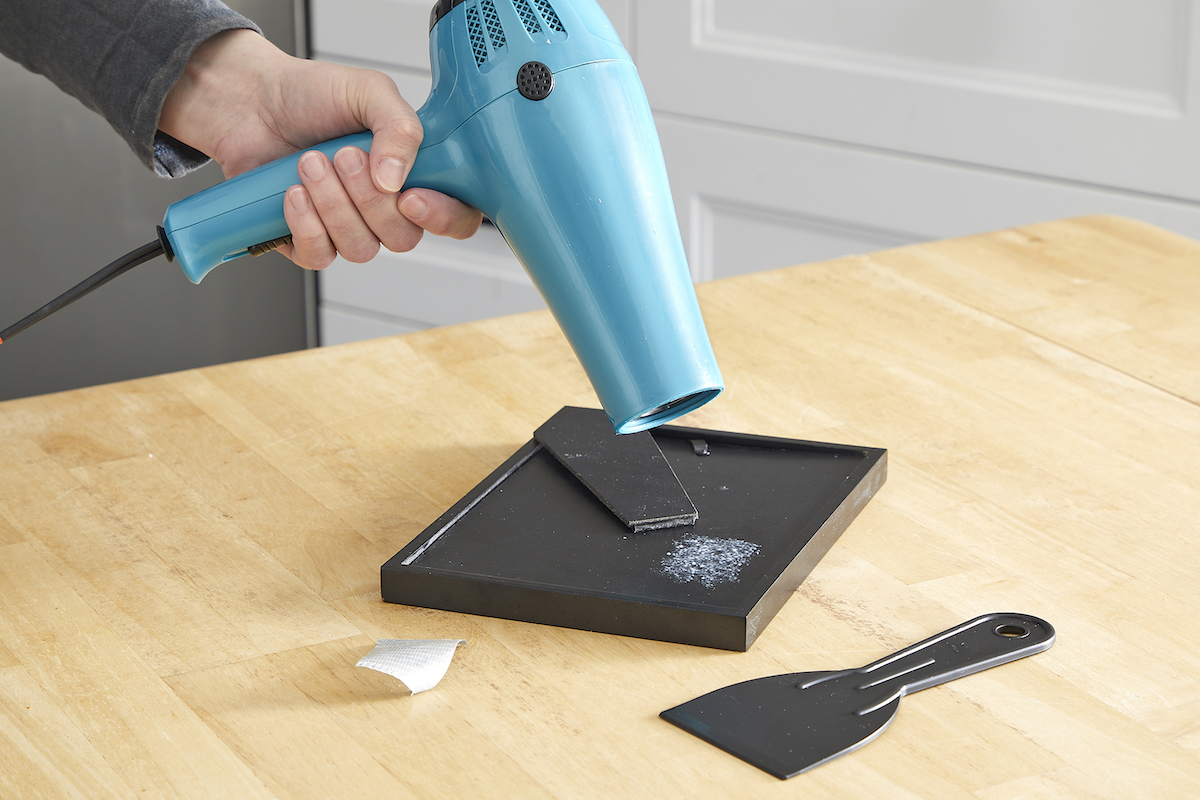
Hot air can weaken the adhesion of duct tape residue, making it easier to remove from such surfaces as unfinished and flat-painted wood, on which you wouldn’t use oil or water. This method may require some extra effort but it’s probably your safest bet, as it doesn’t involve any liquids that could penetrate porous surfaces and cause discoloration or damage.
Crank a hair dryer on its highest setting several inches from the offending material for a minute at a time between each attempt to scrape it off. Work in small sections, administering as many hot air blasts as necessary to remove everything. Be cautious when using heat on delicate or heat-sensitive surfaces, as it may cause warping, discoloration, or other damage.
How to Avoid Leaving Duct Tape Residue
Using the right kind of tape for the task at hand can help prevent sticky messes later. Not all tapes are the same: Some are designed for rough, outdoor surfaces, while others work better on smooth, indoor materials. Choosing a tape that’s specifically suited to your project will not only ensure better adhesion but also make removal easier. Make sure the surface is clean and dry before applying duct tape. Dust, grease, or moisture can weaken the bond and lead to a frustrating experience when the tape doesn’t stick properly.
It’s also worth noting that even the best duct tape isn’t ideal for all surfaces. Avoid using it on delicate materials like painted walls, wallpaper, or unfinished wood, as it can peel off finishes or leave stubborn residue. Similarly, duct tape may not stick well to porous surfaces like brick or concrete. Understanding these limitations will save you time, effort, and the hassle of cleaning up residue later on.
